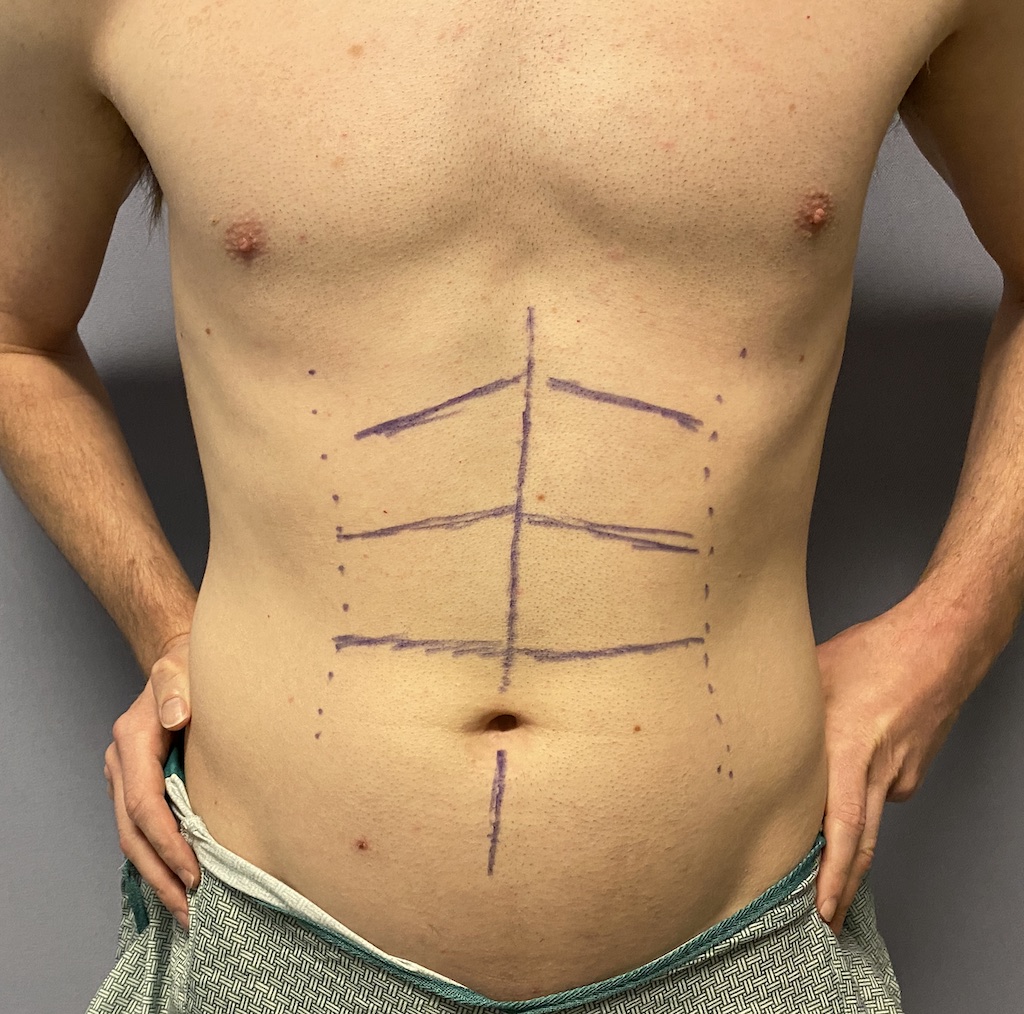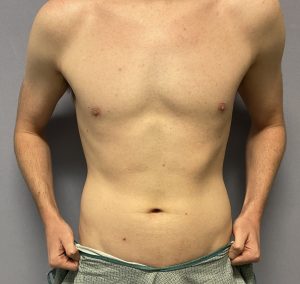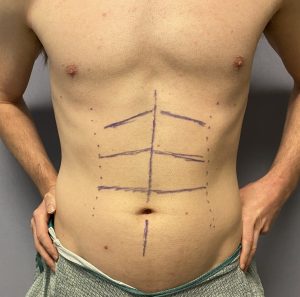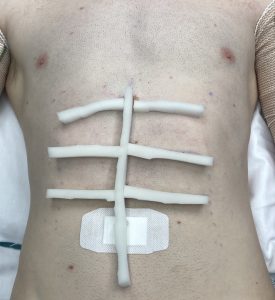Background: Liposuction is now an ‘old’ fat removal procedure that has always had several basic principles for an effective and uncomplicated result. While the technology of liposuction has changed many of these basic principles remain the same. The goal is an even reduction of the subcutaneous fat layer to create a smooth external contour without irregularities or indentations. Whether it is in the face or the body this remains a constant aesthetic goal.
There are certain aesthetic indications, however, where these liposuction principles are ‘violated’ to create the desired effect. The most noteworthy of these is abdominal sculpting or etching. In this aesthetic procedure the goal is to create a visible vertical midline linea alba as well as horizontal inscription lines to form a wash board or six-pack abdominal look. In doing so a deliberate effort is made to remove fat along these linear lines to create indentations which allow the muscle to be pronounced or defined.
While there are some variations as to how abdominal etching is performed the most important consideration is before surgery in patient selection. Those who get the best results are in good general shape and are leaner. It is ideally for the patinet who works out (to some degree), is thin, and despite these efforts can not expose the outlines of the rectus muscles.
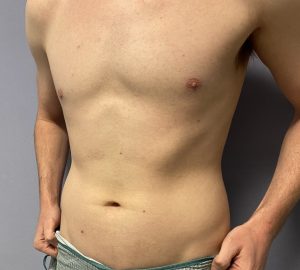

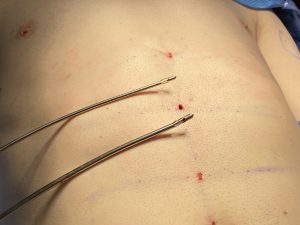
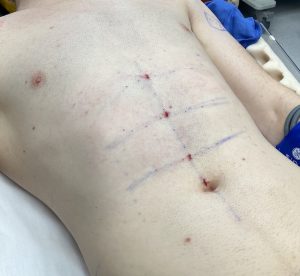

Such compression is left in place for 48 hours after surgery at which time the foam is removed and only an abdominal wrap is used thereafter for an additional week. It will take 4 to 6 weeks to see most of the etch lines to become evident and a full 3 months to see their complete depth and symmetry between the sides.
Abdominal etching is an effective muscle defining procedure in the properly selected patient. Its long term effects will depend on how stable the patient’s weight is. Weight gain will not make the etch lines disappear but it could create an unnatural appearance if fat accumulates and bulges between the etch lines. It is also important to remember that this is an aesthetic procedure that is very difficult, if not impossible, to completely reverse.
Key Points:
1) Abdominal etching is a liposuction procedure designed to create a more defined muscular appearance of the abdomen.
2) Etching liposuction is a unique form of liposuction based in principle changes not technology. (linear unidirectional aspiration with the intent of creating indentations)
3) Postop linear foam dressings help the skin to stick down into the created etch lines.
Dr. Barry Eppley
World-Renowned Plastic Surgeon

